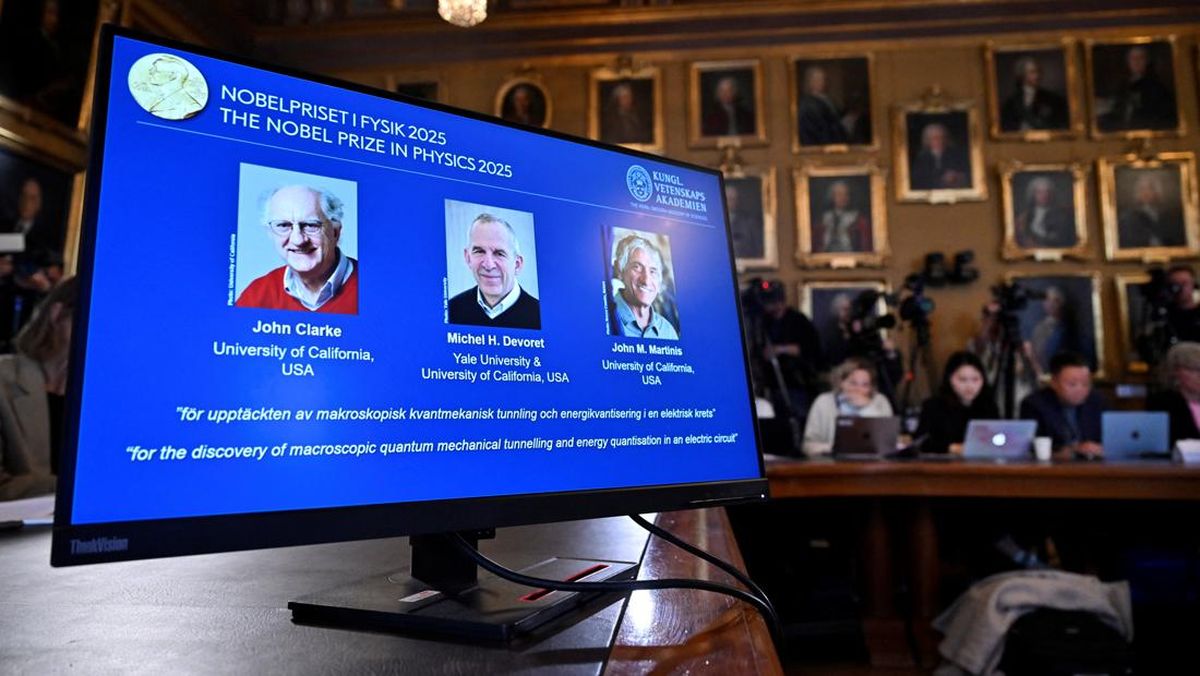Tron: Ares
★★½
M. 119 minutes. In cinemas
So many recent blockbusters – looking at you, Marvel Cinematic Universe – don’t even try for anything visually memorable. That at least can’t be said of Joachim Ronning’s Tron: Ares, the latest instalment of a Disney franchise launched in 1982 with the original Tron, brought back from the dead in 2010 with Tron: Legacy, and now revived once more.

Greta Lee as Eve Kim with Jared Leto as Ares and Arturo Castro as Seth Flores in Tron: Ares.Credit: Leah Gallo
Forget plot and character, this is a movie about glowing grid patterns and neon motorcycles racing through the dark city streets, red light trails unfurling behind them. It’s also about the beat of the Nine Inch Nails score, which sounds the way a 1980s arcade game might have dreamed of sounding if arcade games had dreams.
To a lesser degree, it’s also about Greta Lee’s ponytail, Jodie Turner-Smith’s cropped platinum blonde hair, and Jared Leto’s android-Jesus look of dead-eyed piety – all in service of a script that borrows as much from the Terminator movies as it does from the previous Trons, while striving not very convincingly to comment on the rise of AI as we know it today.
Basically, what we’re dealing with is a spat between rival CEOs. Lee stars as the uptight yet hyper-competent Eve Kim, who’s reluctantly taken over as the public face of the tech company ENCOM (Jeff Bridges is back for a cameo as former ENCOM head Kevin Flynn).
Evan Peters is her arch-nemesis Julian Dillinger, a scrawny geek who serves as nominal head of Dillinger Systems while remaining under the thumb of his imperious mother (Gillian Anderson, making up for not having been in Game of Thrones).
Both he and Lee start out in pursuit of the Permanence Code, a MacGuffin that would allow Leto’s character, a computer-generated super-soldier known as Ares, to manifest in the real world for more than 29 minutes at a time. As Julian’s creation, Ares is initially pitted against Eve, but his loyalties are less clear once he starts learning about human concepts like free will, compassion and 1980s synth-pop.
By contrast his second-in-command Athena, played by Turner-Smith, remains literally loyal to her code – which is to say to the orders delivered by Julian, who manifests in the vaguely hellish virtual realm as a giant red skull.
Loading
It’s all very throwback-y, and up to a point it’s meant to be. At the time of the first Tron, computer games in the real world hadn’t progressed far beyond Space Invaders – and while the film made some use of computer animation, the special effects were largely reliant on more traditional techniques, including handpainting the glowing circuitry frame by frame.
Technical limitations and all, the result has worn oddly well. Indeed, you could make a strong case that the original Tron looks much more awesome than anything in Tron: Ares, for all the work cinematographer Jeff Cronenweth has put into recreating the magic of the original.
Where the first film was a genuine departure from anything that had come before, we now seem stuck in a closed circuit, where past and future are hard to tell apart. The distinction between the virtual world and the physical one likewise remains largely theoretical – and unlike in the comparable Matrix films, this doesn’t appear to be the point.
Where the script allows, Lee does what she can to convince us that Eve is capable of recognisable emotions like grief and insecurity. But she and Ares seem like two of a kind, both far removed from the realm of ordinary people – who rarely appear on screen at all, beyond a couple of comic sidekicks working for ENCOM, and the odd baby or convenience store clerk whose role is to look on in mute bemusement.
Must-see movies, interviews and all the latest from the world of film delivered to your inbox. Sign up for our Screening Room newsletter.
Most Viewed in Culture
Loading


















































